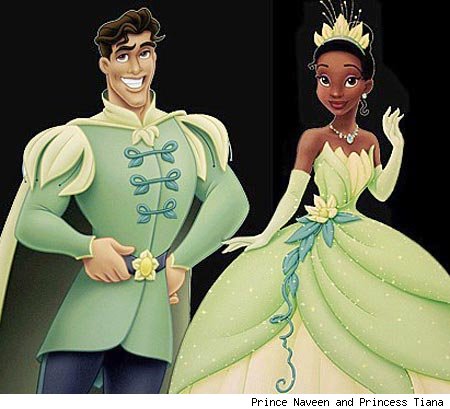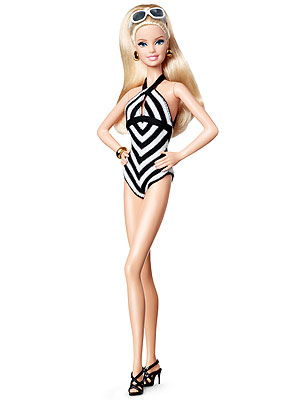As a young girl, it's a dream to be a princess and fall in love with prince charming. When I was younger I used to watch all the classic Disney movies and I would rewatch them fifty more times. I believed that I had to find prince charming in order for me to be happy. Disney movies portray a lot of stereotypes that children are being shown at a young age without knowing it.

I decided to use Cindy's Blog, as the center of my own. Cinderella is a Disney movie that portrays the idea that women must be skinny and beautiful in order to get the man of her dreams. Cindy wrote, "Cinderella's story teach women that their life can be changed by finding the ideal man or because of outward beauty. A prince sees a female all dressed up, thinks she is beautiful and falls in love at first sight." She goes on to write that the girls who don't look like this "feel left out" because they are not being represented. I completely agree with Cindy because all of the disney princesses are skinny, thin and white. Not everyone fits into that category so there should be a variety of Disney princesses that represent other races, social classes and sexual orientation.
 |
| Disney's First Black Princess |
Because these movies and other cartoons can be a huge influence in children's lives, some children who watch violent shows tend to be more violent. When they are watching these shows it portrays that it is okay to defeat the "bad guys" by throwing punches or using weapons in order to save the day. Cindy wrote that the young minds are "still developing therefore the cartoons are greatly influencing the way they think." She goes on to end her post with "In cartoons, females are tend to be viewed as dependent, emotional, sensitive, etc. however the males are viewed the opposite. Males are looked at as dominant, tough, aggressive, etc. These examples of stereotypes are hidden behind the characters in these cartoons." There are so many of these stereotypes in Disney movies from Cinderella to Snow White.
Christensen talked about toys that kids play with that covey that being skinny and pretty in society. She wrote that Radiance didn't just walk into a store and buy presents for her niece and nephew, she "went up to the clerk and said, 'I want a toy that isn't sexist of racist'" (Christensen 134).

In Gerri August's, Safe Spaces, she talks about equality for LGBT in the classroom and out of the classroom. Out of the classroom, toys can convey what society wants. These toy brands like Nintendo, Lego and Barbie is associated with a gender. Nintendo and Lego is supposed to be a boy's toy and Barbie is solely a girl's toy. As a young girl I rarely saw a black Barbie doll.
There are many types of media in society that show what society wants in a women and man and their roles in society. Children learn this at such a young age that they believe that is how society is and should be. As a young girl who grew up with it, it's hard to believe I was shown so many stereotypes without knowing it.
Point to Share: When I was in high school I remember one girl talking about how her mom didn't allow her watch Disney movies. At that time I didn't understand, how could you not watch my favorite animated movies? Now I understand why her mom wouldn't want her to watch it. There are so many stereotypes that make people of that race, gender, social class look bad. I always wanted my children to watch what I grew up with, but now I don't think I want their growing minds introduced to Disney.
I really enjoyed reading this. I like how you used Cindys for your own. I thought this article was a great article to use the extended comments for as well! good job!
ReplyDeleteI liked that you brought up the idea that legos are for boys and dolls are for girls. In one of my other classes we were discussing that lego company just started making legos that were suitable for girls because people were complaining. It's interesting to see that people are starting to become aware of the stereotypes in children's toys and stories.
ReplyDeleteThank you for choosing my blog to do the extended comments, you did such a great job including quotes from my post but explaining them more in depth. I definitely agree with you when you said you do not want your children to watch what we grew up with, I don't think I want my kids exposed to it neither.
ReplyDeleteReally great blog this week! I think some companies are really trying to move away from the gender stereotyping though. Just look at the Lego company now... http://shop.lego.com/en-US/Girls-ByCategory
ReplyDeleteI really liked how you discussed Cindy's article about the stereotyping of a woman needing a man to save them. It's not a healthy environment that any young girl should grow up in. If a young girl grows up thinking that they need to look and feel a certain way then we are doing something wrong in our society as adults. It is our time to teach the young children that it is perfectly okay to be who they are and not what Disney or any brand is telling them they have to be.
ReplyDeleteI really liked the pie chart you used! I really liked the way you discussed Cindy's blog into your work. I really enjoyed reading your blog! good job!
ReplyDeleteThis comment has been removed by the author.
ReplyDelete